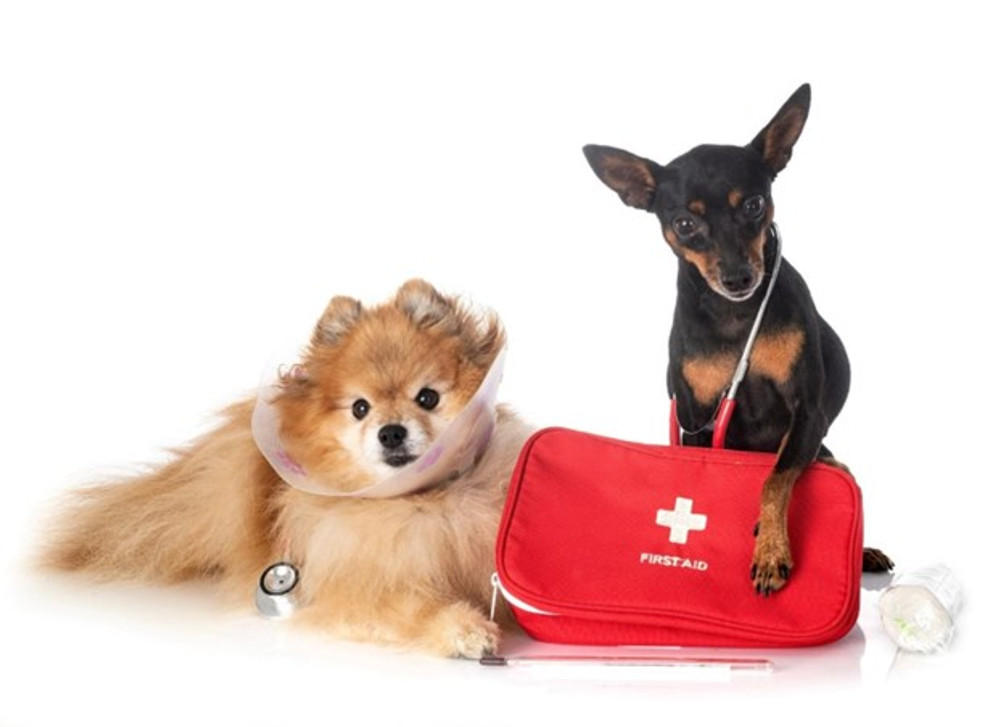Pets are active creatures - running, jumping and chasing in their own homes, as well as every time they go out into the world. Yet, while these actions burn off energy and improve mental engagement, cats, dogs and other pets may get pebbles, splinters and debris embedded into their paws,they may be bitten by an insect, or come in contact with chemical-based substances, like rock salt during winter.
As such, owners are advised to always have a fully stocked pet first aid kit around - including in an accessible location at home or on their person as they go for a walk.
While April marks the start of Pet First Aid Awareness Month, minor injuries are a year-round occurrence. As a veterinarian, take this time to go over the basics of pet first aid, including what should be in a kit and how to treat cuts, scrapes, insect bites and similar concerns:
What Should Be in a Pet First Aid Kit?
To start, make it clear to your clients that human-formulated products should never be used on pets and steer them toward a fully stocked, pre-packaged pet first aid kit. In line with your marketing plan and customer engagement, hand out these kits during your April appointments to reinforce the importance of treating injuries at home and to supply your clients with the essentials for doing so.
Ideally, these kits contain a combination of the following:
- Bandages that won't stick to fur or hair
- Breathable adhesive tape
- Cotton balls
- Hydrogen peroxide
- Antibiotic sprays for cuts and rashes
- Tweezers for removing splinters, debris and ticks
- A syringe
- Towels
- Alcohol wipes
- Saline eye solution
- A small flashlight
- Tear gel
- Medical boots and wraps
- Wound spray
- Anti-itch spray
The Importance of Introducing Pet First Aid
As a veterinarian, don't assume that your clients know what to do when their pets have raw, scraped paws, lick a foreign substance or develop an itchy rash. Along with supplying them with a pet first aid kit, provide information on the following:
Common Pet Injuries
Highlight what pet owners might expect and when a first aid kit becomes necessary. During your appointment, cover common at-home treatment methods for:
- Cuts and scrapes
- Sores
- Insect bites
- Tick removal
- Bacterial infections
- Skin conditions, like dermatitis
- Removing foreign objects
Additionally, give owners a holistic picture of their pet's injury or condition: in many cases, the issue won't be obvious, and instead, behaviors like above-average licking indicate that something is wrong, such as irritated skin, dermatitis or an infected cut. Skin, too, is a factor: prepare owners to check their pets' eyes and ears for irritants and show them how to administer related remedies.

Added to this, emphasize the importance of immediate treatment to stave off infection, reduce hotspots and stop the spread of bacteria and any potential parasites.
Other Considerations
Beyond introducing basic injury care:
- Emphasize that human-formulated first aid products should not be used on pets due to differences in skin pH. Using solutions for humans on a cat or dog may irritate or damage their skin further.
- In addition to separate ointments and wraps, pets require specialized medications. Giving them human-formulated NSAIDs can contribute to digestive, liver and blood pressure issues.
- Because injuries can quickly become serious, be sure to add your practice's information to every pet first aid kit you hand out. This makes it easy for your client to schedule an emergency visit if an infection doesn't respond to a spray or ointment or an irritating skin condition starts to spread.
Prepare for Pet First Aid Awareness Month With Positive Impressions
Use this occasion to introduce the importance of pet first aid. Supply each client with a kit to use at home and include your clinic's contact information. As you put together your strategy, supplement your kit with health and grooming products. Have labels and stickers on hand for adding your address and calling attention to any health considerations, and be ready with prescription bags for any medications you send home with your clients.

